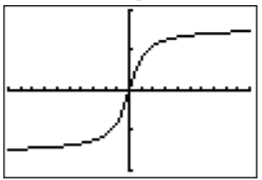19.2: Exercises
- Page ID
- 49074
\( \newcommand{\vecs}[1]{\overset { \scriptstyle \rightharpoonup} {\mathbf{#1}} } \)
\( \newcommand{\vecd}[1]{\overset{-\!-\!\rightharpoonup}{\vphantom{a}\smash {#1}}} \)
\( \newcommand{\dsum}{\displaystyle\sum\limits} \)
\( \newcommand{\dint}{\displaystyle\int\limits} \)
\( \newcommand{\dlim}{\displaystyle\lim\limits} \)
\( \newcommand{\id}{\mathrm{id}}\) \( \newcommand{\Span}{\mathrm{span}}\)
( \newcommand{\kernel}{\mathrm{null}\,}\) \( \newcommand{\range}{\mathrm{range}\,}\)
\( \newcommand{\RealPart}{\mathrm{Re}}\) \( \newcommand{\ImaginaryPart}{\mathrm{Im}}\)
\( \newcommand{\Argument}{\mathrm{Arg}}\) \( \newcommand{\norm}[1]{\| #1 \|}\)
\( \newcommand{\inner}[2]{\langle #1, #2 \rangle}\)
\( \newcommand{\Span}{\mathrm{span}}\)
\( \newcommand{\id}{\mathrm{id}}\)
\( \newcommand{\Span}{\mathrm{span}}\)
\( \newcommand{\kernel}{\mathrm{null}\,}\)
\( \newcommand{\range}{\mathrm{range}\,}\)
\( \newcommand{\RealPart}{\mathrm{Re}}\)
\( \newcommand{\ImaginaryPart}{\mathrm{Im}}\)
\( \newcommand{\Argument}{\mathrm{Arg}}\)
\( \newcommand{\norm}[1]{\| #1 \|}\)
\( \newcommand{\inner}[2]{\langle #1, #2 \rangle}\)
\( \newcommand{\Span}{\mathrm{span}}\) \( \newcommand{\AA}{\unicode[.8,0]{x212B}}\)
\( \newcommand{\vectorA}[1]{\vec{#1}} % arrow\)
\( \newcommand{\vectorAt}[1]{\vec{\text{#1}}} % arrow\)
\( \newcommand{\vectorB}[1]{\overset { \scriptstyle \rightharpoonup} {\mathbf{#1}} } \)
\( \newcommand{\vectorC}[1]{\textbf{#1}} \)
\( \newcommand{\vectorD}[1]{\overrightarrow{#1}} \)
\( \newcommand{\vectorDt}[1]{\overrightarrow{\text{#1}}} \)
\( \newcommand{\vectE}[1]{\overset{-\!-\!\rightharpoonup}{\vphantom{a}\smash{\mathbf {#1}}}} \)
\( \newcommand{\vecs}[1]{\overset { \scriptstyle \rightharpoonup} {\mathbf{#1}} } \)
\( \newcommand{\vecd}[1]{\overset{-\!-\!\rightharpoonup}{\vphantom{a}\smash {#1}}} \)
\(\newcommand{\avec}{\mathbf a}\) \(\newcommand{\bvec}{\mathbf b}\) \(\newcommand{\cvec}{\mathbf c}\) \(\newcommand{\dvec}{\mathbf d}\) \(\newcommand{\dtil}{\widetilde{\mathbf d}}\) \(\newcommand{\evec}{\mathbf e}\) \(\newcommand{\fvec}{\mathbf f}\) \(\newcommand{\nvec}{\mathbf n}\) \(\newcommand{\pvec}{\mathbf p}\) \(\newcommand{\qvec}{\mathbf q}\) \(\newcommand{\svec}{\mathbf s}\) \(\newcommand{\tvec}{\mathbf t}\) \(\newcommand{\uvec}{\mathbf u}\) \(\newcommand{\vvec}{\mathbf v}\) \(\newcommand{\wvec}{\mathbf w}\) \(\newcommand{\xvec}{\mathbf x}\) \(\newcommand{\yvec}{\mathbf y}\) \(\newcommand{\zvec}{\mathbf z}\) \(\newcommand{\rvec}{\mathbf r}\) \(\newcommand{\mvec}{\mathbf m}\) \(\newcommand{\zerovec}{\mathbf 0}\) \(\newcommand{\onevec}{\mathbf 1}\) \(\newcommand{\real}{\mathbb R}\) \(\newcommand{\twovec}[2]{\left[\begin{array}{r}#1 \\ #2 \end{array}\right]}\) \(\newcommand{\ctwovec}[2]{\left[\begin{array}{c}#1 \\ #2 \end{array}\right]}\) \(\newcommand{\threevec}[3]{\left[\begin{array}{r}#1 \\ #2 \\ #3 \end{array}\right]}\) \(\newcommand{\cthreevec}[3]{\left[\begin{array}{c}#1 \\ #2 \\ #3 \end{array}\right]}\) \(\newcommand{\fourvec}[4]{\left[\begin{array}{r}#1 \\ #2 \\ #3 \\ #4 \end{array}\right]}\) \(\newcommand{\cfourvec}[4]{\left[\begin{array}{c}#1 \\ #2 \\ #3 \\ #4 \end{array}\right]}\) \(\newcommand{\fivevec}[5]{\left[\begin{array}{r}#1 \\ #2 \\ #3 \\ #4 \\ #5 \\ \end{array}\right]}\) \(\newcommand{\cfivevec}[5]{\left[\begin{array}{c}#1 \\ #2 \\ #3 \\ #4 \\ #5 \\ \end{array}\right]}\) \(\newcommand{\mattwo}[4]{\left[\begin{array}{rr}#1 \amp #2 \\ #3 \amp #4 \\ \end{array}\right]}\) \(\newcommand{\laspan}[1]{\text{Span}\{#1\}}\) \(\newcommand{\bcal}{\cal B}\) \(\newcommand{\ccal}{\cal C}\) \(\newcommand{\scal}{\cal S}\) \(\newcommand{\wcal}{\cal W}\) \(\newcommand{\ecal}{\cal E}\) \(\newcommand{\coords}[2]{\left\{#1\right\}_{#2}}\) \(\newcommand{\gray}[1]{\color{gray}{#1}}\) \(\newcommand{\lgray}[1]{\color{lightgray}{#1}}\) \(\newcommand{\rank}{\operatorname{rank}}\) \(\newcommand{\row}{\text{Row}}\) \(\newcommand{\col}{\text{Col}}\) \(\renewcommand{\row}{\text{Row}}\) \(\newcommand{\nul}{\text{Nul}}\) \(\newcommand{\var}{\text{Var}}\) \(\newcommand{\corr}{\text{corr}}\) \(\newcommand{\len}[1]{\left|#1\right|}\) \(\newcommand{\bbar}{\overline{\bvec}}\) \(\newcommand{\bhat}{\widehat{\bvec}}\) \(\newcommand{\bperp}{\bvec^\perp}\) \(\newcommand{\xhat}{\widehat{\xvec}}\) \(\newcommand{\vhat}{\widehat{\vvec}}\) \(\newcommand{\uhat}{\widehat{\uvec}}\) \(\newcommand{\what}{\widehat{\wvec}}\) \(\newcommand{\Sighat}{\widehat{\Sigma}}\) \(\newcommand{\lt}{<}\) \(\newcommand{\gt}{>}\) \(\newcommand{\amp}{&}\) \(\definecolor{fillinmathshade}{gray}{0.9}\)Graph the function with the calculator. Use both radian and degree mode to display your graph. Zoom to an appropriate window for each mode to display a graph which includes the main features of the graph.
- \(y=\sin^{-1}(x)\)
- \(y=\cos^{-1}(x)\)
- \( y=\tan^{-1}(x)\)
- Answer
-
 \(\begin{aligned}&-2 \leq x \leq 2 \\&-2 \leq y \leq 2\end{aligned}\)
\(\begin{aligned}&-2 \leq x \leq 2 \\&-2 \leq y \leq 2\end{aligned}\)  \(\begin{aligned}&-2 \leq x \leq 2 \\&-1 \leq y \leq 4\end{aligned} \)
\(\begin{aligned}&-2 \leq x \leq 2 \\&-1 \leq y \leq 4\end{aligned} \) \(\begin{aligned}-10 & \leq x \leq 10 \\-2 & \leq y \leq 2\end{aligned} \)
\(\begin{aligned}-10 & \leq x \leq 10 \\-2 & \leq y \leq 2\end{aligned} \)
Find the exact value of the inverse trigonometric function.
- \(\tan^{-1}(\sqrt{3})\)
- \(\sin^{-1}\left(\dfrac{1}{2}\right)\)
- \(\cos^{-1}\left(\dfrac{1}{2}\right)\)
- \(\tan^{-1}(0)\)
- \(\cos^{-1}\left(\dfrac{\sqrt{2}}{2}\right)\)
- \(\cos^{-1}\left(-\dfrac{\sqrt{2}}{2}\right)\)
- \(\sin^{-1}(-1)\)
- \(\tan^{-1}(-\sqrt{3})\)
- \(\cos^{-1}\left(-\dfrac{\sqrt{3}}{2}\right)\)
- \(\sin^{-1}\left(-\dfrac{\sqrt{2}}{2}\right)\)
- \(\sin^{-1}\left(-\dfrac{\sqrt{3}}{2}\right)\)
- \(\tan^{-1}\left(-\dfrac{1}{\sqrt{3}}\right)\)
- Answer
-
- \(\dfrac{\pi}{3}\)
- \(\dfrac{\pi}{6}\)
- \(\dfrac{\pi}{3}\)
- \(0\)
- \(\dfrac{\pi}{4}\)
- \(\dfrac{3\pi}{4}\)
- \(-\dfrac{\pi}{2}\)
- \(-\dfrac{\pi}{3}\)
- \(\dfrac{5 \pi}{6}\)
- \(-\dfrac{\pi}{4}\)
- \(-\dfrac{\pi}{3}\)
- \(-\dfrac{\pi}{6}\)
Find the inverse trigonometric function value using the calculator. Approximate your answer to the nearest hundredth.
For parts (a)-(f), write your answer in radian mode.
- \(\cos^{-1}(0.2)\)
- \(\sin^{-1}(-0.75)\)
- \(\cos^{-1}\left(\dfrac{1}{3}\right)\)
- \(\tan^{-1}(100,000)\)
- \(\tan^{-1}(-2)\)
- \(\cos^{-1}(-2)\)
For parts (g)-(l), write your answer in degree mode.
- \(\cos^{-1}(0.68)\)
- \(\tan^{-1}(-1)\)
- \(\sin^{-1}\left(\dfrac{\sqrt{2}+\sqrt{6}}{4}\right)\)
- \(\tan^{-1}(100,000)\)
- \(\cos^{-1}\left(\dfrac{\sqrt{2-\sqrt{2}}}{2}\right)\)
- \(\tan^{-1}(2+\sqrt{3}-\sqrt{6}-\sqrt{2})\)
- Answer
-
- \(1.37\)
- \(−0.85\)
- \(1.23\)
- \(1.57\)
- \(−1.11\)
- undefined
- \(47.16^{\circ}\)
- \(-45^{\circ}\)
- \(75^{\circ}\)
- \(90.00^{\circ}\)
- \(67.5^{\circ}\)
- \(-7.5^{\circ}\)


